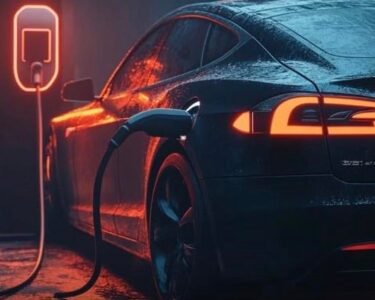In recent years, the electric motorcycle industry has experienced significant growth, driven by advancements in battery technology. As manufacturers strive to improve performance, increase range, and reduce charging times, the evolution of electric motorcycle batteries has become a focal point. In this article, we’ll explore the latest advancements in electric motorcycle batteries, along with the challenges that manufacturers face in pushing the boundaries of innovation.
Advancements in Electric Motorcycle Batteries
- Energy Density: One of the most notable advancements in electric motorcycle batteries is the increase in energy density. Modern lithium-ion batteries offer higher energy density compared to their predecessors, allowing for longer ranges on a single charge. This improvement has been crucial in making electric motorcycles more practical for everyday use, with some models now capable of traveling over 200 miles on a single charge.
- Fast Charging: Another significant advancement is the development of fast-charging technology. Manufacturers have made strides in reducing charging times, with some electric motorcycles now capable of charging to 80% capacity in as little as 30 minutes. This rapid charging capability makes electric motorcycles more convenient for long-distance rides and reduces downtime for riders.
- Battery Management Systems (BMS): Advanced battery management systems play a crucial role in optimizing the performance and lifespan of electric motorcycle batteries. These systems monitor cell voltages, temperatures, and other parameters to ensure safe and efficient operation. Additionally, BMS technology enables features such as regenerative braking, which helps extend the range of electric motorcycles by capturing energy during deceleration.
- Solid-State Batteries: While still in the early stages of development, solid-state batteries hold promise for the future of electric motorcycles. These batteries use solid electrolytes instead of liquid electrolytes found in traditional lithium-ion batteries, offering potential benefits such as higher energy density, faster charging, and improved safety. Although solid-state batteries are not yet widely available in electric motorcycles, ongoing research and development efforts are underway to bring this technology to market.
Challenges Facing Electric Motorcycle Batteries
- Cost: Despite advancements in technology, the cost of electric motorcycle batteries remains a significant barrier to widespread adoption. High manufacturing costs and limited economies of scale contribute to the overall price of electric motorcycles, making them less accessible to the average consumer. However, ongoing research and development efforts are aimed at reducing costs and improving affordability.
- Range Anxiety: While range anxiety—the fear of running out of battery power—is less of an issue today than in the past, it still presents a challenge for electric motorcycle manufacturers. Despite improvements in battery technology, some riders may still be hesitant to switch to electric due to concerns about range limitations, particularly for long-distance travel. Educating consumers about the capabilities of electric motorcycles and expanding charging infrastructure are key strategies for addressing range anxiety.
- Charging Infrastructure: The availability of charging infrastructure remains a challenge for electric motorcycle riders, particularly in rural or less densely populated areas. While major cities and urban centers often have a growing network of charging stations, riders may face challenges when traveling to remote locations. Increasing investment in charging infrastructure and expanding coverage areas will be essential for supporting the widespread adoption of electric motorcycles.
- Battery Lifespan: The lifespan of electric motorcycle batteries is another consideration for riders. Over time, batteries degrade and lose capacity, which can impact the overall performance and range of the motorcycle. Manufacturers are continually improving battery chemistries and implementing strategies to extend battery lifespan, such as thermal management systems and advanced BMS technology.
The evolution of electric motorcycle batteries has brought about significant advancements in performance, range, and charging times. Despite these advancements, challenges such as cost, range anxiety, charging infrastructure, and battery lifespan remain areas of focus for manufacturers and industry stakeholders. As technology continues to evolve and innovation accelerates, electric motorcycles are poised to become an increasingly viable and sustainable mode of transportation for riders around the world.
In addition to the challenges mentioned, the environmental impact of electric motorcycle batteries is another area of concern. While electric motorcycles offer lower emissions compared to traditional gas-powered bikes, the production and disposal of batteries raise environmental considerations. Manufacturers are exploring sustainable battery materials and recycling programs to minimize the environmental footprint of electric motorcycles.
Furthermore, advancements in battery technology have implications beyond the motorcycle industry. Electric vehicles, renewable energy storage systems, and grid-scale energy storage stand to benefit from ongoing research and development in battery technology, driving innovation and sustainability across multiple sectors.
As the demand for electric motorcycles continues to grow, addressing these challenges will be essential for realizing the full potential of electric mobility and creating a more sustainable future.






